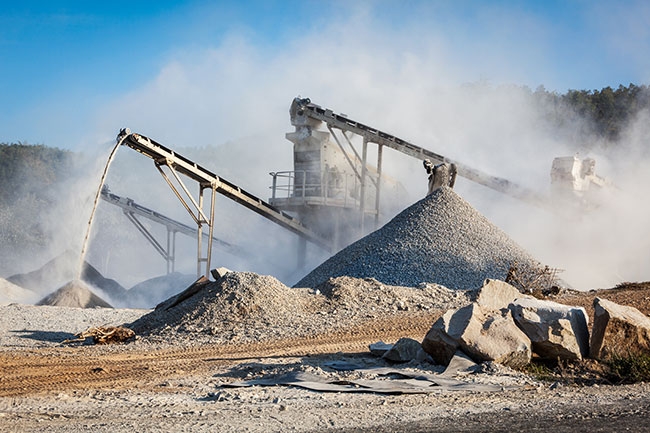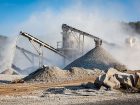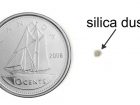
Features
Columns
Education
Silica, it’s not just dust!
Protecting employees from silica dust exposure
August 24, 2018 By Geoff Clark
 Photo: Getty Images
Photo: Getty ImagesWhat is silica? When you consider the many hazards workers face on a construction site, you probably wouldn’t think that dust poses too much of a danger to health. Well, think again. Many workplace activities that create dust can expose workers to airborne silica.
Silica is one of the most common substances on earth. It is found in natural materials such as sand, sandstone, granite, clay, shale and slate, and building products like concrete and brick. Quartz is a common form of crystalline silica and poses the greatest risk to human health.
It’s estimated that nearly 400,000 Canadian workers are overexposed to this hazardous dust every year, mainly in the construction industry.
Are you exposed to silica dust?
If you crush, cut, grind, saw or drill materials that contain silica, dangerous crystalline silica dust is released into the air. Microscopic particles of this silica can permanently damage your lungs over time, leading to diseases such as silicosis and lung cancer.
If you do one of the following activities, or are working nearby, you are at risk of breathing silica dust:
- Chipping, sawing, grinding, hammering, and drilling of rock, concrete, or masonry;
- Crushing, loading, hauling, and dumping of rock;
- Road construction;
- Demolition of concrete or masonry structures;
- Abrasive blasting or hydro blasting of concrete or stone; and
- Dry sweeping or using compressed air to clean up concrete, gravel or sand dust.
What is silicosis?
One of the diseases caused by the prolonged breathing of crystalline silica dust is silicosis. The fine particles are deposited in the lungs, causing thickening and permanent scarring of the lung tissue. The scar tissue restricts the lungs’ ability to extract oxygen from the air and breathing becomes increasingly difficult.
Chronic silicosis is the most common form of silicosis, and develops after years of exposure to relatively low concentrations of airborne silica. Initially, workers with silicosis may have no symptoms; however, as the disease progresses, a worker may experience shortness of breath, severe cough and general weakness. These symptoms can worsen over time and lead to death.
How much dust is dangerous?
If you are standing in a cloud of dust on a construction or roadbuilding site, you are likely overexposed to silica. The amount of dust that could cause you harm is very small and you might not be able to see it. In most provinces in Canada, the eight-hour exposure limit for crystalline silica is only 0.025 milligrams per cubic metre of air – a very small number!
How can you protect yourself from airborne silica dust?
If you are a worker exposed to silica dust, you can do the following:
- Learn about the control methods that can protect you;
- Ask your supervisor how you will be protected when performing dusty work;
- Follow safe work procedures, and use respiratory protection; and
- Talk to your family doctor, who may recommend medical monitoring.
The best way to protect yourself from exposure to silica is to control the dust at the source. Whenever possible, use wet methods for crushing, cutting, drilling, grinding, and sweeping to reduce dust. Wetting is very effective at reducing dust at the source; however, a drawback to these methods is that the dust is not collected – the wet slurry must be cleaned up so that the dust does not dry and become airborne.
Selecting the right machinery and tools for the job, such as jackhammers, grinders and cutters with a water spray system or a HEPA (high efficiency particulate aerosol) filtered vacuum system, is important too. Enclosed cab filtration systems are also available for heavy-duty equipment such as drills, bulldozers, graders and trucks.
Other controls involve activities that are not directly related to the actual physical work, but are important to ensure that you are protected from exposure to silica dust. These include:
- Signs warning about the dangers of silica dust;
- Keeping unprotected workers away from dusty work;
- Training on the dangers of silica exposure, and how to use dust controls and personal protective equipment (e.g., respirators); and
- Washing facilities that you can use to clean up at the end of the shift.
Your employer must have an Exposure Control Plan for silica dust. This plan should include purpose and responsibilities, risk assessment, controls, education, training, written safe work procedures, washing or decontamination facilities, health monitoring, and documentation.
A new online silica tool
The Silica Control Tool was developed by the BC Construction Safety Alliance, in collaboration with WorkSafeBC and the University of B.C. This online resource walks employers through the process of producing exposure control plans. Basically, employers can plug in information such as a specific job task (like “milling asphalt”), the equipment used to perform it (like “milling machine”), and the controls used (like “water spray and local exhaust system”). The application will take all the data into account and then generate an exposure level. If the level is above the allowable limit, the employer can try out different controls to see their effect on reducing the exposure level. At the end of the process, the employer has a custom control plan reflecting all of the information provided by the user and generated by the tool. The online tool works on computers, tablets and smartphones — and exposure control plans can be managed and stored electronically.
The silica tool is currently available to B.C. employers on the BCCSA website (https://www.bccsa.ca/Silica-Control-Tool.html). The BCCSA is currently working to make the tool available for employers in the rest of Canada.
Silica-related diseases are entirely preventable. Employers in all Canadian jurisdictions are required to determine your risk of silica exposure and put controls in place to protect you from silica dust.
Print this page

